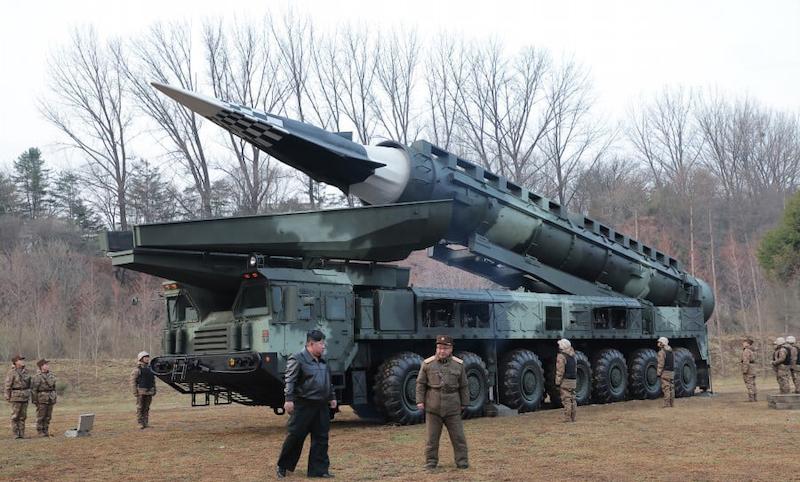SOURCE: AFI


In a significant development amid escalating tensions in South Asia, Pakistan has reportedly approached its long-standing ally, China, to acquire advanced hypersonic missile technology, specifically Hypersonic Glide Vehicles (HGVs), following the failure of its Fatah-I, Fatah-II, and CM-400AKG missiles to penetrate India’s robust air defense systems. Sources indicate that Pakistan intends to rebrand any acquired technology as an indigenous development to bolster its domestic defense narrative, according to information shared with Indian Defence Research Wing (idrw.org).
During the 2025 India-Pakistan conflict, Pakistan deployed its Fatah-I and Fatah-II guided multiple rocket launchers, along with the Chinese-supplied CM-400AKG air-to-surface missile, in attempts to target Indian assets. The Fatah-I, with a range of 140 km, and the Fatah-II, an advanced variant with a 400 km range, were developed as part of Pakistan’s push for self-reliance in precision strike systems. The CM-400AKG, touted by its manufacturer, China’s Aviation Industry Corporation, as a hypersonic missile capable of Mach 5 speeds, was launched from Pakistan’s JF-17 Thunder jets, co-developed with China.
However, India’s multi-layered air defense network, comprising the Russian S-400 Triumf, the Indo-Israeli Barak-8 Medium Range Surface-to-Air Missile (MRSAM), and the indigenous Akash system, successfully intercepted these threats. Notably, on May 10, 2025, India’s Barak-8 intercepted a Fatah-II missile aimed at Delhi over Sirsa, Haryana, demonstrating the effectiveness of its defense architecture.
The failure of these missiles, particularly the CM-400AKG, which Pakistan and Chinese state media claimed had destroyed an Indian S-400 system in Adampur, Punjab, has raised questions about their effectiveness against advanced air defenses. Indian sources have refuted these claims, asserting that no S-400 system was hit, highlighting potential exaggerations by Pakistan and China.
The inability of the Fatah series and the CM-400AKG to evade India’s air defenses, particularly the S-400, which boasts a 400 km engagement range and the ability to track 100 targets simultaneously, has prompted Pakistan to seek more advanced weaponry. The S-400’s sophisticated radar systems and layered missile defenses have proven challenging for Pakistan’s current arsenal, which struggles to penetrate India’s airspace without risking escalation.
Pakistan has reportedly requested China to provide access to Hypersonic Glide Vehicle (HGV) technology, similar to China’s DF-17 missile system. The DF-17, a medium-range ballistic missile equipped with the DF-ZF HGV, is capable of speeds between Mach 5 and Mach 10 (6,100–12,200 km/h) and can perform extreme maneuvers at low altitudes, making it difficult for conventional missile defense systems to intercept. According to defense analysts, Pakistan aims to acquire or co-develop this technology, potentially rebranding it as a locally developed system to align with its narrative of indigenous defense innovation.
This move mirrors Pakistan’s historical reliance on China for advanced military technology. China has previously supplied Pakistan with the HQ-9B (FD-2000), HQ-16FE, and CM-400AKG systems, as well as co-developed the JF-17 Thunder fighter jet. Reports suggest that China may either sell the DF-17 directly, transfer technology for Pakistan to develop a similar system, or facilitate an arrangement through a third party, such as North Korea, which has also received Chinese support for its HGV program.
Pakistan’s pursuit of hypersonic technology is driven by its need to counter India’s growing air defense capabilities and maintain strategic parity. The S-400, combined with India’s recent test of a long-range hypersonic missile on December 16, 2024, has heightened Pakistan’s concerns about its ability to project power effectively. Hypersonic missiles, with their speed, maneuverability, and low-altitude flight profiles, are seen as a potential solution to bypass India’s advanced defenses without escalating conflicts to the nuclear level.
NOTE: AFI is a proud outsourced content creator partner of IDRW.ORG. All content created by AFI is the sole property of AFI and is protected by copyright. AFI takes copyright infringement seriously and will pursue all legal options available to protect its content.